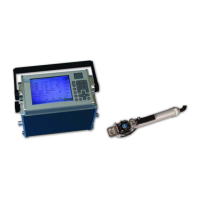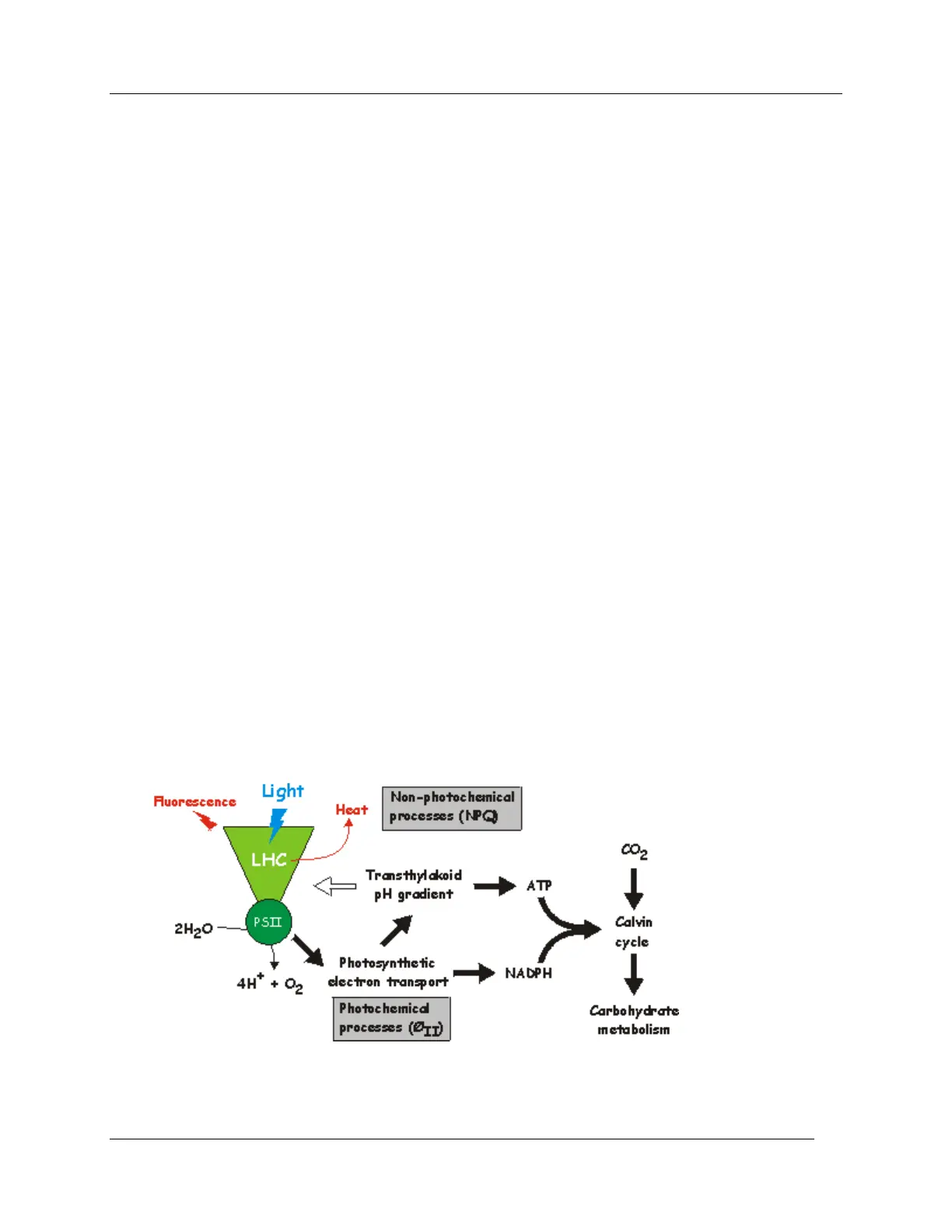Brief Introduction to Chlorophyll Fluorescence
CIRAS-2 Operator's Manual Version 2.04
- 119 -
Brief Introduction to Chlorophyll Fluorescence
The CFM is a powerful tool for photosynthesis research. However, to fully utilize its functionality and
achieve optimum performance, it is important to appreciate the measurements that CFM is designed to
make and some of the principles behind its operation. The following introductory sections are only
intended as a very limited introduction to chlorophyll fluorescence measurement. More comprehensive
information can be found from the references cited in the text. For a modern review see Maxwell and
Johnson 2000 or Baker et al. 2008.
What is chlorophyll fluorescence?
When light energy is absorbed by the chlorophyll pigment the electronic configuration of the molecule is
temporarily altered. This “excited” configuration is inherently unstable and short-lived (typically less than
10
-8
sec) as several processes compete to dissipate the absorbed energy.
In photosynthetic systems, these processes can be categorized into two groups:
Electron donation from the pigment to an acceptor molecule occurs. The
energy is then used in the carbon fixation cycle.
Non-
photochemical
processes:
Energy is re-emitted from the sample both in the form of infra-red
radiation (heat) and red/far-red radiation which is known as chlorophyll
fluorescence. Re-emitted light energy is always at a longer wave-length
than the absorbed light.
The competition between these processes for absorbed the energy means that a reduction in the rate of
one process will be associated with a corresponding increase in the rates of competing processes e.g. a
reduction in the dissipation of energy by photochemistry will be reflected in an increase in energy
dissipation by non-photochemical processes such as heat production and chlorophyll fluorescence.
Consequently measurement of changes in fluorescence emission with the CFM-1 can be used to infer
information about changes in the efficiency of light use for photochemistry (Reviewed in Krause and Weis
1991 and Govindjee 1995).
Since the work of Emerson et al. (1932) it has been widely accepted that there are two separate
photochemical steps during photosynthesis which are associated with different groups of pigments; these

